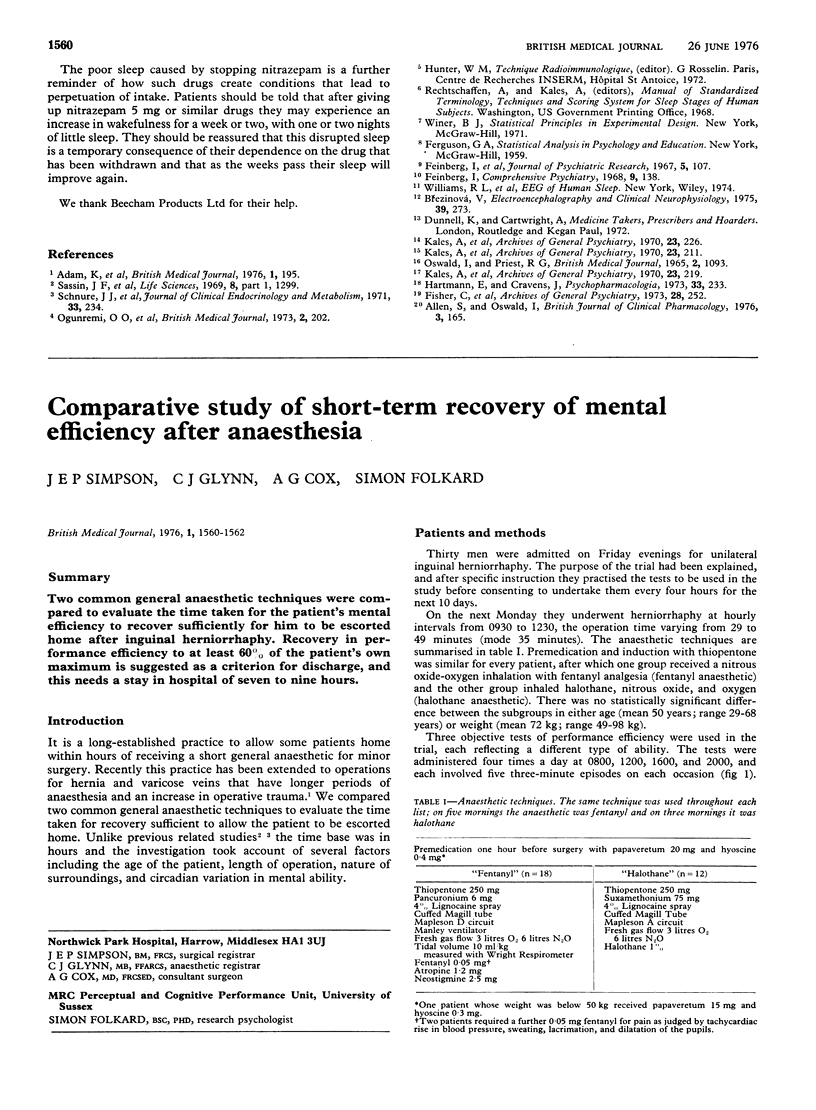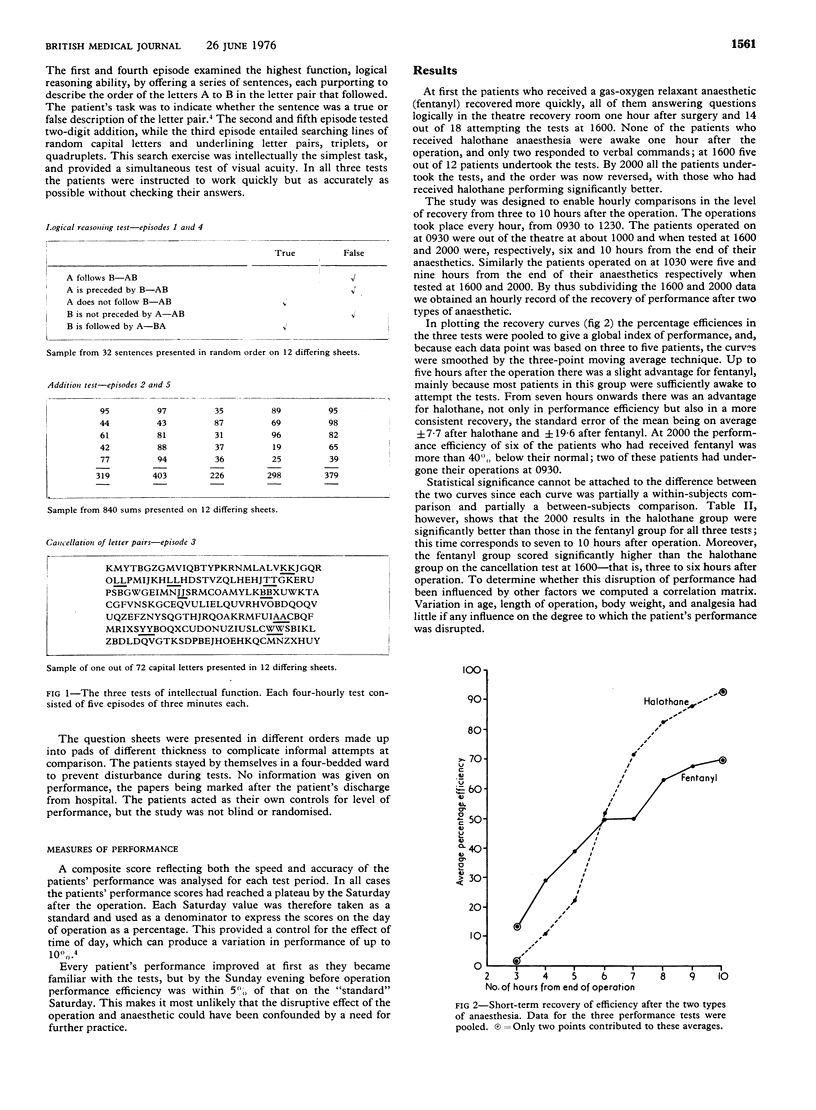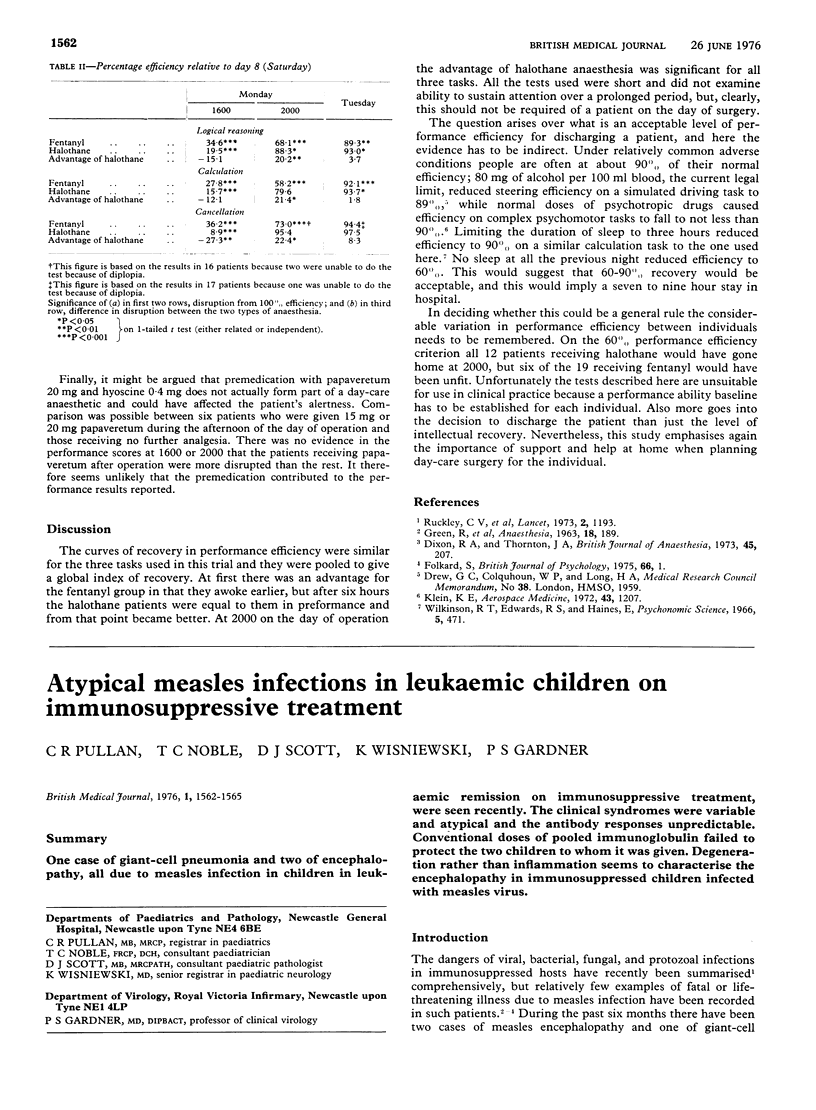Abstract
Two common general anaesthetic techniques were compared to evaluate the time taken for the patient's mental efficiency to recover sufficiently for him to be escorted home after inguinal herniorrhaphy. Recovery in performance efficiency to at least 60% of the patient's own maximum is suggested as a criterion for discharge, and this needs a stay in hospital of seven to nine hours.
Full text
PDF


Selected References
These references are in PubMed. This may not be the complete list of references from this article.
- Dixon R. A., Thornton J. A. Tests of recovery from anaesthesia and sedation: intravenous diazepam in dentistry. Br J Anaesth. 1973 Feb;45(2):207–215. doi: 10.1093/bja/45.2.207. [DOI] [PubMed] [Google Scholar]
- Folkard S. Diurnal variation in logical reasoning. Br J Psychol. 1975 Feb;66(1):1–8. doi: 10.1111/j.2044-8295.1975.tb01433.x. [DOI] [PubMed] [Google Scholar]
- GREEN R., LONG H. A., ELLIOTT C. J., HOWELLS T. H. A method of studying recovery after anaesthesia. A critical assessment of recovery following methohexitone and thiopentone using a complex performance task. Anaesthesia. 1963 Apr;18:189–200. doi: 10.1111/j.1365-2044.1963.tb13533.x. [DOI] [PubMed] [Google Scholar]
- Klein K. E. Prediction of flight safety hazards from drug induced performance decrements with alcohol as reference substance. Aerosp Med. 1972 Nov;43(11):1207–1214. [PubMed] [Google Scholar]
- Ruckley C. V., Maclean M., Ludgate C. M., Espley A. J. Major outpatient surgery. Lancet. 1973 Nov 24;2(7839):1193–1196. doi: 10.1016/s0140-6736(73)92951-6. [DOI] [PubMed] [Google Scholar]


